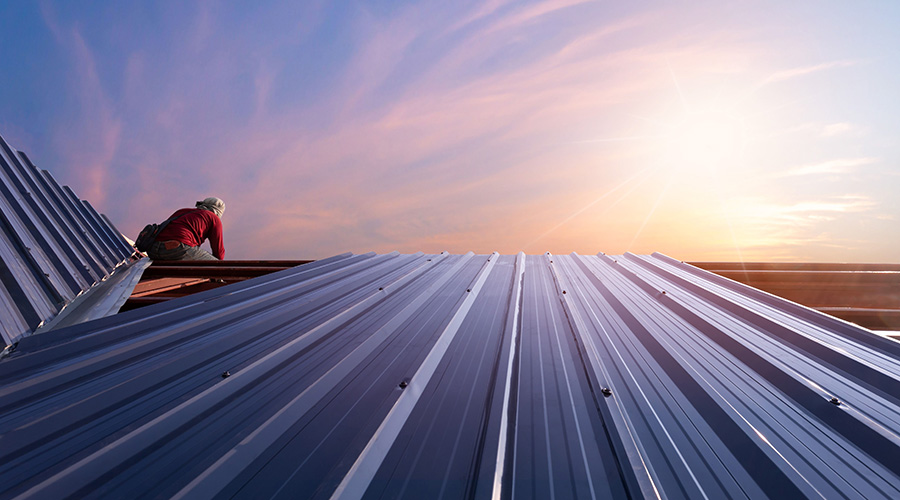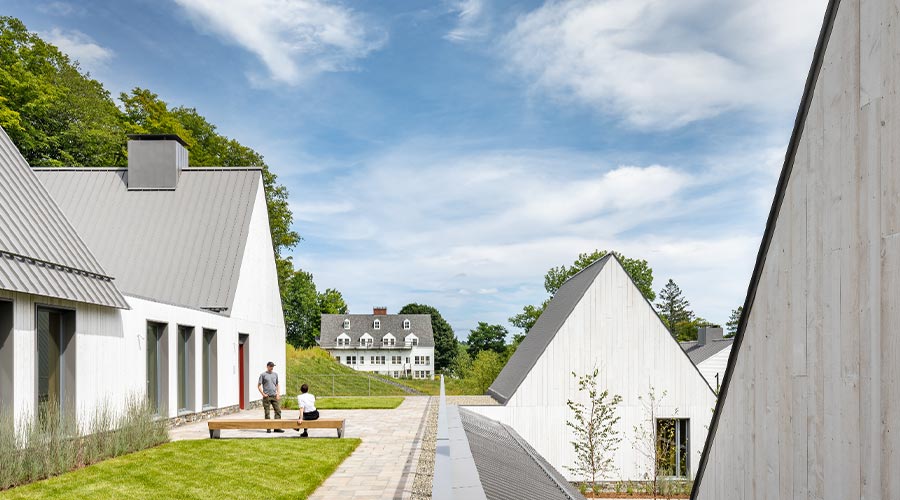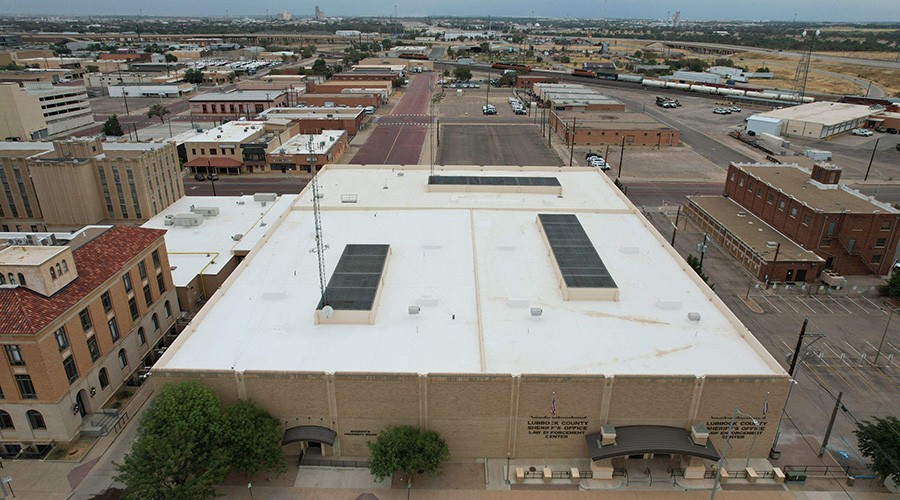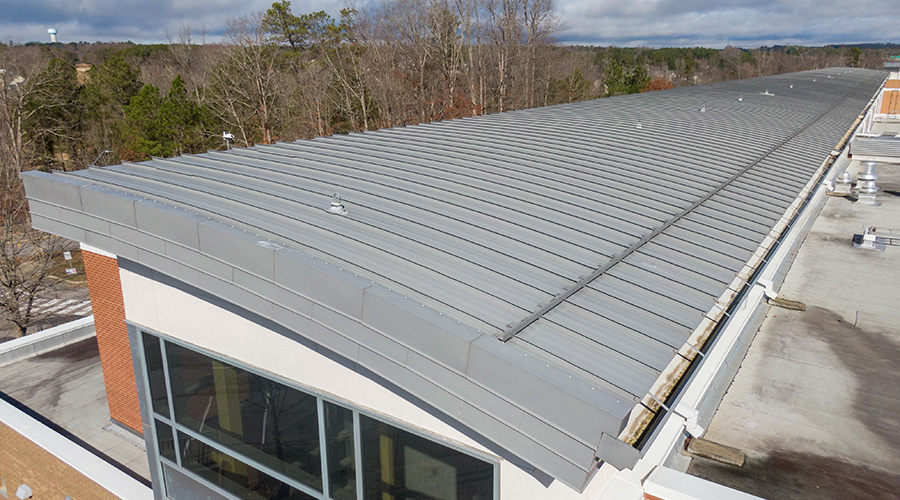Push for Cool Roofs Runs from Rebates to Mandates
Energy and environmental benefits are leading government bodies and utilities to support cool roofs with new codes, research and financial incentives
It is well documented that a traditional dark roof can add significantly to a building’s cooling load. The interest in lighter, more reflective roofs has been around for more than a decade, and the products are increasingly more varied and claim ever-greater levels of reflectiveness. What’s more incentives have sprung up in a half-dozen Sunbelt states. Both government agencies and local utilities provide continuing research and incentives.
The heart of the cool roof focus is the estimated $40 billion spent annually in the United States for cooling commercial buildings — one-sixth of the electricity consumed nationwide. Research has verified that various roof products have greatly reduced air conditioning loads in buildings, cutting energy bills up to 50 percent, and shaving air-conditioning peak usage by 10 to 15 percent.
For example, a strip mall and single-story flat-roof commercial buildings in Florida with metal roofs experienced a 25 percent cut in cooling loads; school buildings tested were in the 10 percent range, says Craig Muccio, an end-use evaluation coordinator at Florida Power and Light (FPL), which operates in the state with the largest amount of cooling degree days in the nation.
A range of variables contributes to the amount of savings, according to FPL’s research, Muccio says. Four of the key factors are the air-conditioning system’s efficiency, the age of the roof, the level of insulation, and the configuration and orientation of the buildings.
Pacific Gas and Electric Co. (PGE) has been closely monitoring ongoing research and other cool-roof programs at the California Energy Commission (CEC) and the Lawrence Berkeley National Laboratory (LBNL), Livermore, Calif., a federal research center managed by the University of California, Berkeley. “Our objective recently has been to understand how well cool roofs work and under what conditions they save energy,”says Peter Turnbull, customer service program manager for the San Francisco utility.
In California, LBNL tested three cool-roof buildings in the state’s hot Central Valley region: two medical office buildings, measuring 30,000 and 50,000 square feet, and a large chain drug store outlet. The two medical buildings cut air conditioning loads by 18 and 13 percent, respectively, while the drug store’s load dropped by about 2 percent.
As part of a cool-roof initiative among a number of utilities in Southeastern states, FPL initiated some of the most concentrated roofing efforts. “We looked to see if there were technologies and applications that would help the overall load profiles for our customers,” says Jack Rows, an FPL energy efficiency manager. “Within Florida, we have been in it longer than any of the other utilities in the Southeast, so we’re a good baseline for looking at cool roofs.”
One of the assessments by LBNL estimates potential annual savings from cool roofs in about a dozen major metropolitan areas, and the locations in the Sunbelt, not surprisingly, offer the most potential savings, with Phoenix and Los Angeles leading the way; Dallas, Houston and Miami are next. Buildings in Philadelphia, Washington, D.C., and Chicago will see savings, but the potential is less than for their Sunbelt counterparts.
Ideal climates for potential cool-roof buildings are ones with long cooling and short heating seasons, but cool roofs can reduce energy costs in much of the country. Roofs with high thermal emittance — high ability to radiate heat — and high solar reflectance are said to be cooler in the sun. The same is true of low-emittance roofs with very high solar reflectance.
Rebates/Incentives
Incentives for cool roofs have appeared in some Sunbelt states. For example, CEC is currently offering rebates on cool roofing that generally run 15 cents per square foot. The rebates have been ongoing for two years and remain at least through 2003. The state is running out of money for the program, but regulatory action is expected to resolve the situation.
In Florida, FPL offers an incentive of 15 cents per square foot to commercial and residential customers for a good reflective roof with a long life that on average costs about $1 per square foot installed, FPL’s Muccio says. “We’re promoting cool roofs for any of our customers who are replacing part if not all of an existing roof.”
With FPL, any light-colored thermoplastic roof membrane or reflective-roof coating is eligible for an incentive as long as the reflective measures are installed over the conditioned building space, meet the Energy Star standards and increase solar reflectance by a minimum of 73 percent.
FPL has a network of more than 1,000 certified installers eligible to do the roofing and other energy efficiency work under its Commercial/Industrial Building Envelope (CIBE) program. Incentives for customers come as part of CIBE “certificates,” which are given by the contractors to qualifying customers that are prescreened by the utility.
California Title 24
California’s stringent building code efficiency standards, Title 24, are currently being overhauled and upgraded. Cool roofing is cited in the standard in a small way, but under the current proposal it will become a much more important part of the code in 2005. Title 24 is mainly for new construction, although a reroofing section is planned.
Two key measures — solar reflectivity and thermal emittance — are included in the proposed Title 24 standards for nonresidential buildings. Now a compliance option, the cool-roof standards will become a prescriptive requirement for low-sloped roofs with a ratio of rise-to-run not exceeding 2:12. High-sloped and residential roofs would be exempt. Buildings covered by the new requirement are offices, retail stores, health care facilities, schools, universities and high-tech manufacturing facilities.
Title 24 specifies rules for certification and labeling of solar reflectance and thermal emittance roofing products, using third-party testing of these two measurements. That differs from Energy Star numbers, which are supplied by product manufacturers exclusively.
Energy Star
The Energy Star program provides information on roofing products. To be an Energy Star qualified product, the material needs to have an initial reflectivity of .65. The highest rated products are in the .85 range. Details are on the agency’s Web site, which includes 18 pages of products, including membranes and coatings that claim reflectivity measures ranging from a low of .70 to highs of .91 on a scale of 0 to 1.0; scientists say a score of 1.0 is impossible. More than 150 manufacturers are listed on the site.
Roof products that meet or exceed the .65 solar reflectance level, without compromising product quality and performance, qualify for the Energy Star label, according to officials at EPA. Through a voluntary agreement, manufacturers put the Energy Star label on packaging for qualifying roof products and use the label in promotions and advertising of the certified products.
Professionals recommend that facility managers check local utilities or other sources for third-party verifications of reflectivity claims.
National requirements under Energy Star aren’t as stringent as what is proposed in the upgraded California Title 24 requirements. For example, a low-slope cool roof can qualify under Energy Star with a reflectivity factor of .65, compared with .70 for California’s proposed new requirement. Steep-slope roofs can be as low as .25 for reflectance under Energy Star.
LEED Rating System
One other tool available to the building community is the Leadership in Energy and Environmental Design (LEED) rating system that has been developed by the decade-old U.S. Green Building Council (USGBC) in Washington, D.C. LEED has no specific criteria for cool roofs, but the use of them in connection with various urban heat island mitigation measures can help a building meet LEED criteria.
“We have one credit in particular within our sustainable sites category that specifically addresses landscaping and exterior design to reduce heat island and gives credit to projects that use light-colored, high-albedo materials,” says Emily Turk, USGBC’s chief architect. “It also gives credit to projects that use Energy Star high reflectance roofing or green-vegetation roofs.”
“The difference between a highly reflective roof and a more conventional, or ‘dark’ roof, can be something like a surface temperature difference of 50 or 60 degrees,” says PGE’s Turnbull. “Ambient temperature might be 110 degrees in the summer in the Central Valley of California. The temperature of a conventional roof might be 180 degrees, and a surface temperature of a cool roof with high reflectivity might be 120 degrees. When you think of the Delta-T, if you want to keep the inside space at 75 degrees, there is a tremendous difference between a surface that is 180 degrees and one that is 120 degrees.
“A cool roof is going to be a little bit warmer than the ambient temperature, but not much,” he says. “There is no doubt it saves energy, and we think there is some pretty good evidence that you get better life of the roof when you’re not dealing with the real extreme temperatures. All things being equal, cool roofs can extend the roof’s life.”
Richard Nemec is a writer who covers energy issues.
Cool Roof Web Sources
Related Topics:











